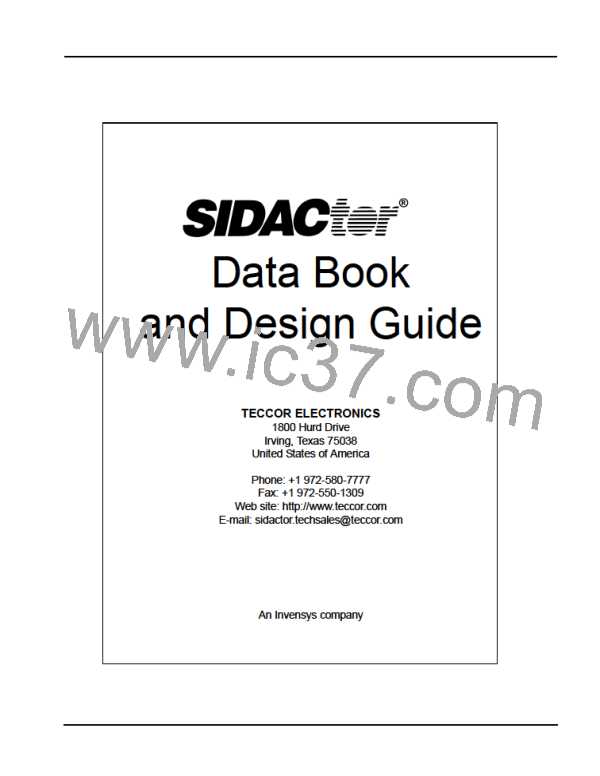Construction and Operation
Construction and Operation
SIDACtor devices are thyristor devices used to protect sensitive circuits from electrical
disturbances caused by lightning-induced surges, inductive-coupled spikes, and AC power
cross conditions. The unique structure and characteristics of the thyristor are used to create
an overvoltage protection device with precise and repeatable turn-on characteristics with
low voltage overshoot and high surge current capabilities.
Key Parameters
Key parameters for SIDACtor devices are VDRM, IDRM, VS, IH, and VT, as shown in Figure 5.1.
V
DRM is the repetitive peak off-state voltage rating of the device (also known as stand-off
voltage) and is the continuous peak combination of AC and DC voltage that may be applied
to the SIDACtor device in its off-state condition. IDRM is the maximum value of leakage
current that results from the application of VDRM. Switching voltage (VS) is the maximum
voltage that subsequent components may be subjected to during a fast-rising (100 V/µs)
overvoltage condition. Holding current (IH) is the minimum current required to maintain the
device in the on state. On-state voltage (VT) is the maximum voltage across the device
during full conduction.
+I
IT
IS
IH
IDRM
-V
+V
VDRM
VT
VS
-I
Figure 5.1 V-I Characteristics
Operation
The SIDACtor device operates much like a switch. In the off state, the device exhibits
leakage currents (IDRM) less than 5 µA, making it invisible to the circuit it is protecting. As a
transient voltage exceeds the SIDACtor device’s VDRM, the device begins to enter its
protective mode with characteristics similar to an avalanche diode. When supplied with
enough current (IS), the SIDACtor device switches to an on state, shunting the surge from
the circuit it is protecting. While in the on state, the SIDACtor device is able to sink large
© 2002 Teccor Electronics
5 - 3
http://www.teccor.com
+1 972-580-7777
®
SIDACtor Data Book and Design Guide

 TECCOR [ TECCOR ELECTRONICS ]
TECCOR [ TECCOR ELECTRONICS ]